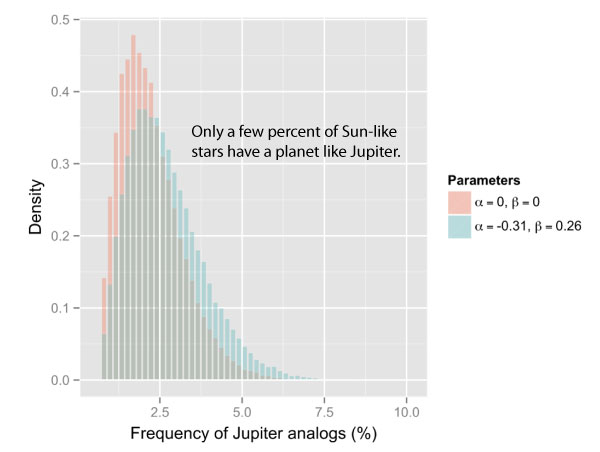Mauna Kea from Mana Road
Time slips past. The discovery of 51 Pegasi b and the heady early days of planet detection are now more than two decades gone. The pulsar planets have been known for a full quarter century, and N=10,000 is the next milestone for the catalogs.
It’s fair to say that there have been amazing discoveries in twenty years, culminating with an Earth-mass planet in a temperate orbit around the closest star to the Sun. And there’s even significant funding to jump start the design of a probe that can go there.
Yet in the background, as the breakthroughs rolled in, the Keck I Telescope was gradually accumulating Doppler measurements of hundreds of nearby Sun-like stars with HD designations and magnitudes measured in the sevens and eights. This data is as important for what it shows (scores of planets) as for what it doesn’t show (a profusion of planets with Jupiter-like masses and orbits). There are several reasons why our Solar System is unusual, and Jupiter is one of them.
From Rowan+ 2016
The Lick Carnegie Exoplanet Survey has just released a uniformly reduced compendium of 60,949 precision Doppler Velocities for 1,624 stars that have been observed using the iodine cell technique with HIRES at the Keck-I telescope, with an accompanying paper to appear in the Astronomical Journal. The velocities are all freely available on line here, ready to be explored with the Systemic Console. They contain hundreds of intriguing, possibly planetary signals, including a strong hint of a super-Earth orbiting Lalande 21185, the fourth-closest stellar system.
Stay tuned…



Pingback: Ils découvrent 114 exoplanètes, dont plusieurs potentiellement habitables – Ûhxnûé